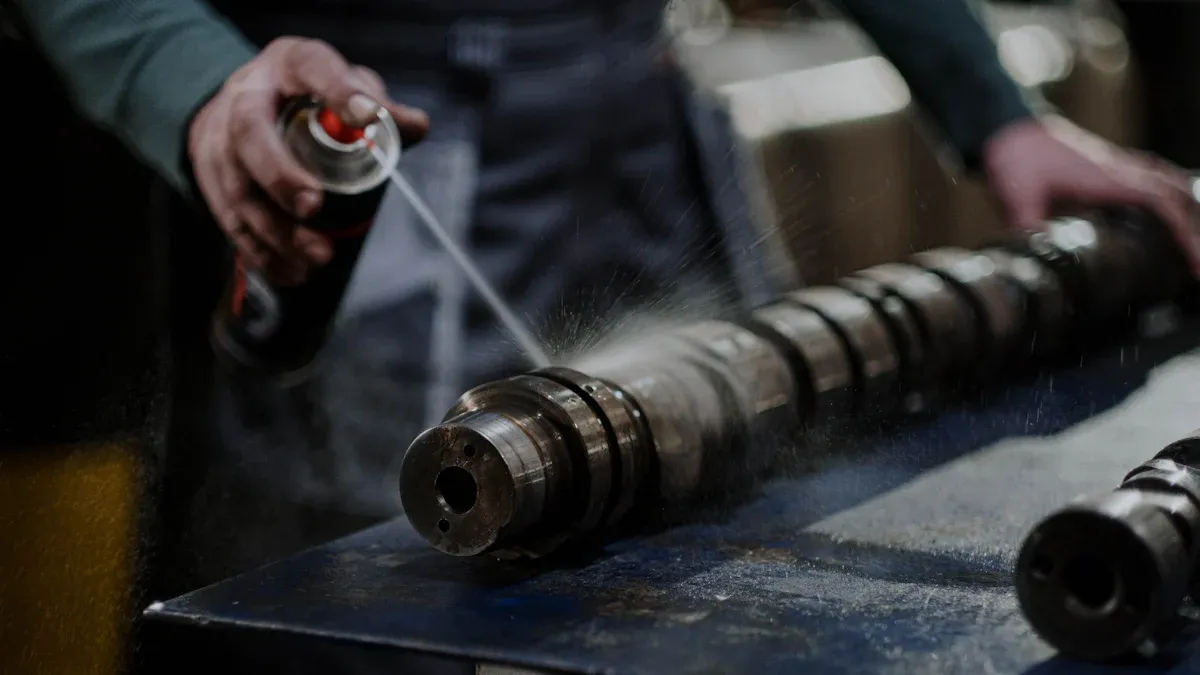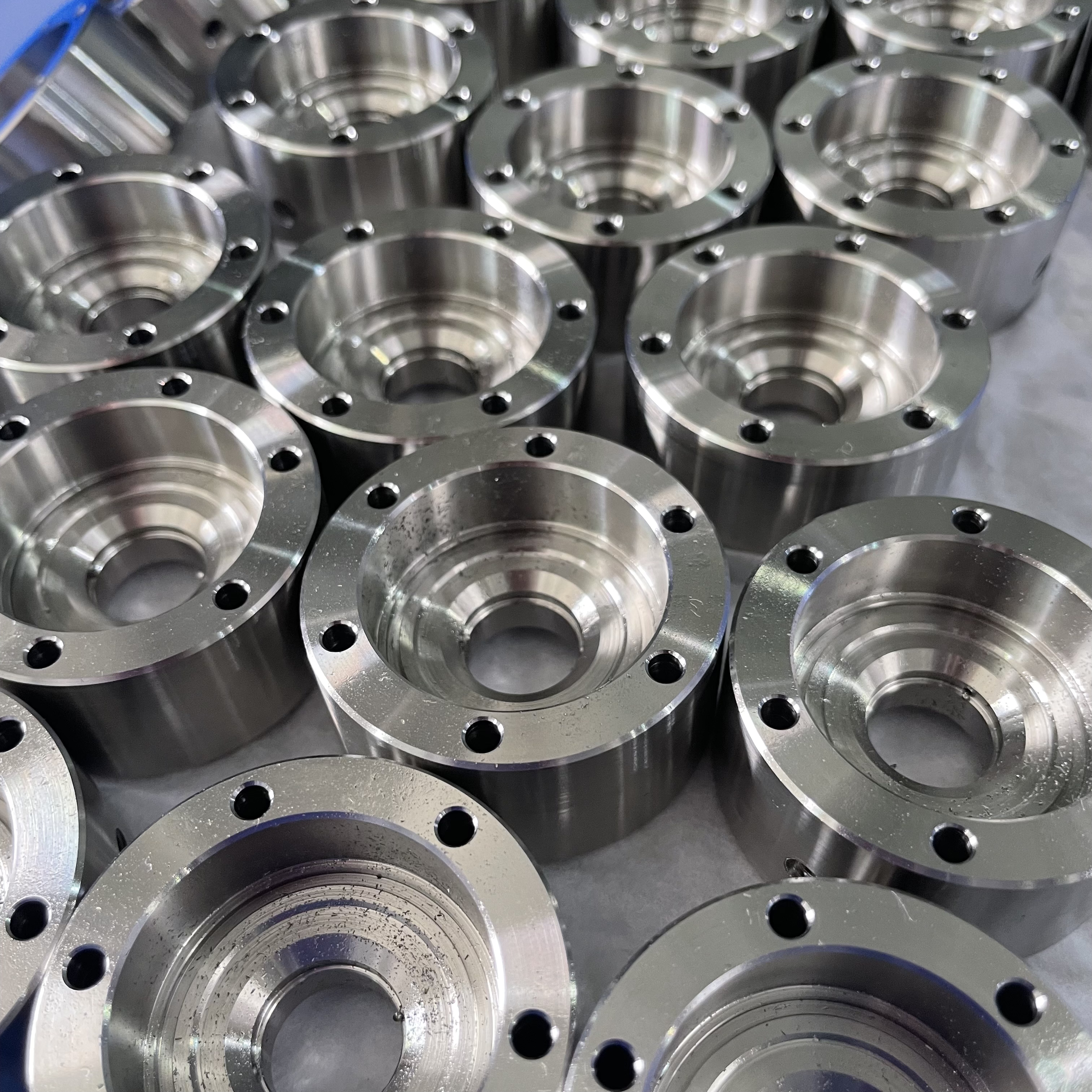What You Need to Know About Tolerances and Precision in CNC Prototyping

In CNC prototyping, tolerances and precision play a critical role in creating functional and high-quality parts. Tolerances define the acceptable variation in dimensions, ensuring the final product matches the intended design. For example, standard machining tolerances typically range from ±0.005 inches to ±0.002 inches, while tighter tolerances, such as ±0.0005 inches, are achievable for specific features like reamed holes. Precision ensures that CNC machines consistently produce parts with minimal deviation, which is vital for maintaining part compatibility and performance. However, achieving tighter tolerances often increases costs. You must balance precision requirements with manufacturing budgets to optimize both functionality and affordability.
Key Takeaways
Tolerances are small allowed differences in size. They make sure parts fit the design. Knowing types like standard and geometric helps pick the best one for your project.
The material you use affects how precise you can be. Pick materials carefully to balance accuracy and ease of making. This helps meet design needs without spending too much.
Explaining tolerance needs clearly is very important. Use detailed drawings and talk to manufacturers early to set realistic goals.
Understanding CNC Part Tolerances

Types of Tolerances: Standard, Bilateral, and Geometric
When working with CNC machining tolerances, you’ll encounter three main types: standard, bilateral, and geometric. Each serves a unique purpose in ensuring parts meet design and functionality requirements.
Standard tolerances are the most commonly used and define acceptable dimensional variations based on industry norms. These are ideal for general applications where extreme precision isn’t necessary.
Bilateral tolerances allow for variations in both positive and negative directions from a specified dimension, such as ±0.05mm. This flexibility makes them suitable for parts where slight deviations won’t compromise performance.
Geometric tolerances, also known as geometric dimensioning and tolerancing (GD&T), focus on part geometry. GD&T uses symbols and feature control frames to define tolerances for form, orientation, and position. This system ensures clarity in complex designs and is essential for high-precision assemblies.
Tolerance Type | Description |
|---|---|
Standard Tolerances | Commonly used to define the variation of dimensions, often based on industry standards. |
Bilateral Tolerances | Allows variation in both positive and negative directions from a specified dimension. |
Geometric Tolerancing | Uses a system based on geometry to define tolerances, focusing on function and measurement clarity. |
How Tolerances Affect Part Fit, Functionality, and Assembly
Tolerances directly impact how CNC parts fit and function. For example, bilateral tolerances provide flexibility during manufacturing, making them ideal for general machining. In contrast, unilateral tolerances, which allow variation in only one direction, are critical for applications like sealing surfaces where a minimum dimension must be maintained.
Profile tolerances control the shape and location of a surface, ensuring that parts with complex geometries perform as intended. GD&T plays a vital role in ensuring precise alignment in assemblies, especially for custom machined parts. By selecting the right tolerance type, you can achieve the perfect balance between part functionality and manufacturability.
Common Standards for CNC Machining Tolerances
Standards like ISO and ASME provide a framework for CNC machining tolerances. ISO standards, such as ISO 2768 and ISO 286, are widely used in Europe and Asia. In the United States, ASME standards like ASME B4.1 and ASME Y14.5 are more prevalent. These standards ensure consistency and clarity in dimensional tolerances across industries.
Geometric dimensioning and tolerancing is a globally recognized system that simplifies communication between designers and manufacturers. By adhering to these standards, you can ensure your parts meet the required specifications and avoid costly errors during production.
Factors to Consider When Selecting Tolerances
Material Properties and Their Impact on Tolerances
The material you choose for CNC prototyping significantly affects the achievable tolerance and level of precision. Different materials have unique properties, such as hardness and elasticity, which influence machining processes and dimensional accuracy.
Harder materials, like hardened steel, allow for tighter tolerances but require specialized tools and slower machining speeds to prevent tool wear.
Softer materials, such as plastics, may deform under cutting pressure, making it harder to achieve tight tolerances.
Materials prone to heat deformation during machining can alter final dimensions, requiring controlled environments and cooling techniques.
Understanding these material characteristics helps you select the right balance between tolerance and manufacturability, ensuring the desired dimensional accuracy without unnecessary complications.
Balancing Part Functionality with Cost
Selecting tighter tolerances often increases production costs. You need to weigh the benefits of improved part functionality against these added expenses. Achieving high precision in CNC machining tolerances involves:
Using specialized tooling, which is more expensive.
Extending machining time due to slower speeds and additional processes.
Managing higher scrap rates, as parts failing to meet tolerances lead to material waste.
Frequent inspections and advanced quality control measures also contribute to higher costs. By carefully evaluating your part's functional requirements, you can determine whether the added expense of tighter tolerances is justified.
The Role of Design in Achieving Tighter Tolerances
Your design choices play a crucial role in achieving tighter tolerances without significantly increasing costs. Strategies like material selection, design adjustments, and Design for Manufacturability (DFM) principles can optimize the process.
Strategy | Description |
|---|---|
Material Selection | Choosing cost-effective materials can optimize costs while achieving tighter tolerances. |
Design Adjustments | Modifying part geometry and dimensions can enhance tolerance control and reduce expenses. |
Design for Manufacturability (DFM) | Simplifying designs can lower production costs and improve machining efficiency. |
Incorporating these strategies ensures your design supports the required level of precision while keeping costs manageable. For example, simplifying part geometry can reduce machining complexity, making it easier to maintain dimensional accuracy.
Achieving Precision in CNC Prototyping

Importance of High-Precision Equipment and Tools
Using high-precision equipment is essential for achieving tight tolerances in CNC prototyping. Advanced CNC machines with regular maintenance and calibration ensure consistent accuracy. High-quality cutting tools also play a critical role. Dull tools can reduce precision, while specialized tools with sharp geometries and durable coatings maintain cutting-edge integrity.
You should also consider the material being machined. Premium-grade metals with uniform properties are ideal for achieving tight tolerances due to their predictable machining characteristics. Additionally, advanced fixturing methods stabilize parts during machining, especially when working with softer materials. These practices help you produce high precision parts with minimal deviations.
Environmental Factors: Temperature, Humidity, and Stability
Environmental conditions significantly impact the precision of CNC machining tolerances. Temperature fluctuations can cause thermal deformation in materials, leading to dimensional inaccuracies. High humidity levels may also affect the machining process, especially for materials prone to moisture absorption.
To minimize these effects, you should optimize the production environment. Maintaining a stable temperature and controlling humidity levels ensures consistent machining conditions. This approach reduces errors and helps you achieve extreme precision needs, even for complex designs.
Best Practices for Communicating Tolerance Requirements
Clear communication of tolerance requirements is vital for successful CNC machining services. Start by ensuring your technical drawings include detailed annotations and consistent symbols. Geometric dimensioning and tolerancing (GD&T) is an excellent tool for this purpose. It uses standardized symbols and rules to define tolerances and measurement methods.
Engage all stakeholders early in the design process to confirm that tolerances are realistic and achievable. Maintain open communication with your CNC manufacturer throughout the project to address any issues promptly. Establishing a feedback loop with machinists also helps improve manufacturability and ensures your tolerance requirements are met.
Challenges and Benefits of Tighter Tolerances
Cost Implications of Tight Tolerances
Achieving tighter tolerances in CNC machining tolerances often leads to increased costs. You may need advanced inspection and testing processes, which require sophisticated measurement tools and skilled labor. These inspections ensure the accuracy of your parts but add to manufacturing expenses.
Slower cutting speeds and additional machining passes extend processing time, raising production costs.
Specialized tools and techniques, such as high-precision cutting tools and advanced fixturing, further increase expenses.
Higher scrap rates occur when parts fail to meet tight tolerances, resulting in wasted materials.
While these costs can seem significant, they are often necessary for producing high-quality products that meet strict functional requirements.
Enhanced Part Quality and Performance
Tighter tolerances directly improve the quality and performance of CNC machined parts. Precise dimensions ensure a perfect fit, which is critical for applications requiring reliability and functionality. By selecting the right materials and using advanced tooling, you can achieve exceptional accuracy. Rigorous inspection processes also contribute to the durability and overall performance of your final product. These efforts result in high-quality products that meet or exceed expectations.
Avoiding Over-Engineering in CNC Prototyping
Over-engineering tolerances can lead to unnecessary complications. Excessively tight tolerances increase production costs due to specialized tooling and extended machining times. They also raise the risk of higher scrap rates and require advanced inspection tools. To avoid these issues, you should optimize tolerances based on specific application requirements. Statistical tolerance analysis helps ensure that tolerances are functional without being excessive. Thorough analysis prevents assembly issues and ensures parts fit together properly. By focusing on practical tolerances, you can maintain accuracy while keeping costs manageable.
Understanding tolerances and precision is essential for producing high-quality CNC parts. Tolerances ensure compatibility, efficiency, and safety, while precision guarantees consistent results. Balancing these factors with practicality helps you optimize costs and functionality. Collaborating with CNC experts early in the design phase allows you to set realistic tolerances, ensuring smooth manufacturing and superior part performance.
FAQ
What is the difference between tolerance and precision in CNC machining?
Tolerance defines acceptable dimensional variation, while precision ensures consistent accuracy during production. Both are essential for achieving reliable and functional CNC parts.
How do tighter tolerances affect CNC machining costs?
Tighter tolerances increase costs due to slower machining speeds, specialized tools, and higher scrap rates. Evaluate your part's functionality to determine if tighter tolerances are necessary.
Why is material selection important for CNC machining tolerances?
Material properties, like hardness and elasticity, influence achievable tolerances. Harder materials allow tighter tolerances, while softer ones may deform, affecting dimensional accuracy.
See Also
Achieving Excellence in CNC Machining: Materials and Prototyping
Recognizing Precision CNC Machining's Role in Effective Manufacturing
Overcoming Obstacles: Improving CNC Prototyping Precision and Speed
Unveiling the Secrets of CNC Machining Precision Programming
Excelling in CNC Machining for High-Quality Parts Production
About US
Follow Us
Your prototype holds unparalleled significance, and we deeply value its uniqueness. Collaborating with you during the preparation phase for running your prototype or parts is a commitment we gladly embrace. Whether it's a single part or a complex assembly, we are dedicated to selecting the optimal tools and pathways to bring your envisioned product to life.
At Precision Fab CNC Machining, we specialize in producing parts for prototypes, short runs, and high-volume production. Our prototyping machine capabilities extend across metal, plastic, and wood machining, with welding fabrication services available to complement and finalize your prototype if required.
Address
Address: Room320 10F, Building A,Nanshan international building, Dayawan District, Huizhou, Guangdong, 516001 China
Contacts
billy@timaycnc.com

